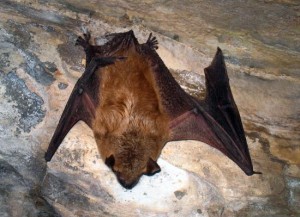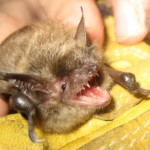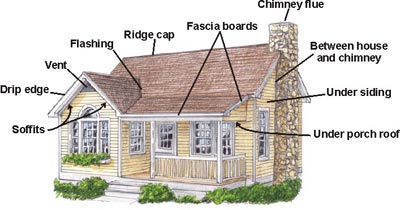Bat Removal MN
Bats… When many people think of bats an image of large blood sucking beasts appear, yet this image has no basis in reality and is mostly originating from old horror movies and folklore. All the negative stories and tales you’ve heard about bats are greatly exaggerated. But whether you love them or not, bats are a very unique and interesting animal. The fact is, they may not have a reputation as the cutest and cuddliest animals, but bats really do more help than harm. In fact, a new study found bats save the agriculture industry more than $3 billion a year in pest control — money that would otherwise be spent on pesticides.
Bats, the only mammals that truly fly, belong to the order Chiroptera. Their ability to fly, their secretiveness, and their nocturnal habits have contributed to bat folklore, superstition, and fear. They are worldwide in distribution and include about 900 species, second in number only to Rodentia (the rodents) among the mammals. Bats are not rodents, and have little in common with mice or rats. Bats are not filthy little critters. They are meticulous about keeping their fur clean and groomed. The smell associated with bats is due to the accumulation of guano and urine below their roosting areas.
There are seven species of bats in MN, only two will live in dwellings. Little brown Myotis and the large brown bat. Minnesota bats feed on insects such as beetles, moths, flies, and mosquitoes, etc. Bats mate in fall and winter, giving birth to young in April through July. Young bats grow very vast and can fly within three weeks. Exclusion of colonies must take place after August 31 but before bats begin hibernation. Excluding bats at the wrong time of year can lead to far greater problems for the homeowner than the one he or she currently faces such as bats dying and creating an odor problem or more bats getting inside the living quarters.
 People are most likely to encounter bats when a roosting colony takes up residence in a building. Attics often make excellent habitat, as do barns. Occasionally, a bat or bats may enter the living quarters of a home. At the same time, however, most people do not want bats actually living in their home, and it is important to remember there are effective ways to remove them that are both safe for your family as well as the bats.
People are most likely to encounter bats when a roosting colony takes up residence in a building. Attics often make excellent habitat, as do barns. Occasionally, a bat or bats may enter the living quarters of a home. At the same time, however, most people do not want bats actually living in their home, and it is important to remember there are effective ways to remove them that are both safe for your family as well as the bats.
Bats need only a half inch or less of space to crawl through in order to enter a building. Once inside, if the habitat is good, the colony grows until the homeowner notices the bats flying out of the building, notices the droppings in the attic, chimney, outside, or even basement. Sometimes a bat will get lost and find its way out of the attic and into the living area.
Bat Exclusion
Bats only become a problem when they decide to use an attic or other section of a home or building for a roosting or nursery colony. Most people do not tolerate that idea very well, and it becomes necessary to evict the bats and repair the structure as needed to prevent them from entering in the future. Accumulations of their droppings (guano) can cause odor and bug problems, which is the primary reason bats should be excluded from a structure occupied by people.
Most people will panic when they discover bats are living in their home. The first reaction is to immediately seal all the holes on the structure. It is the absolute worst thing you can do. If they are not able to find their way into your living quarters, they die in the attic. Bats being trapped inside where they will die can also create an odor/ pest problem. You can guess how pleasant that becomes after a week or so.
Is Your Home Under Attack By Bats?
There is no quick and easy fix when it comes to bat control. The only effective way to get the bats out of your house is through exclusion. Bat removal is not an easy simple job. The proper way to get rid of them is to exclude the colony – seal off 100% of possible secondary entry points on the home and remove all of the bats from the building safely. It is often very challenging, and it must be done correctly. An amateur attempt could result in disaster – dead, rotting bats, and bats swarming throughout the walls and the home.
Getting rid of bats requires experience. If your house is currently under attack by bats it is wise to call a Minnesota Wild Animal Removal expert. Professional bat removal ensures that the colony will no longer use your home or business as a roosting area, and that no bats can get back in.




